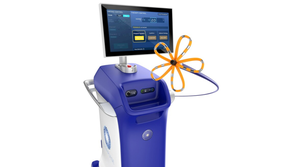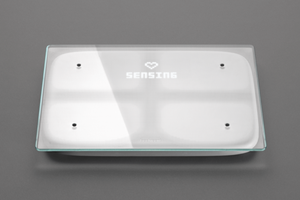Rare Harmony Marks FDA Reform Bills on Hill
December 1, 1997
Medical Device & Diagnostic Industry Magazine
MDDI Article Index
An MD&DI December 1997 Column

WASHINGTON WRAP-UP
Industry and FDA work together to draft wording of House bill.
James G. Dickinson
CDRH Releases Review Update, p. 34
Lasergate Continues, p. 35
In sharp contrast to the acrimony that plagued last year’s doomed efforts at legislating FDA reform, this year’s attempt overcame rancor and mutual suspicion to achieve an astonishing level of industry-agency harmony. In so doing, circumstances once more vindicated FDA experts’ counsel that no FDA legislation succeeds without the agency’s assent, either tacit or expressed.
This time, FDA’s assent was probably more tacit than open, philosophically driven by the many reforms already under way in FDA Center for Devices and Radiological Health (CDRH) director Bruce Burlington’s reengineering initiative, which in turn was fueled by Vice President Al Gore’s long-established (and escalating) Reinventing Government initiative.
Just how much did FDA cooperate with industry in bringing the reform bills to fruition? A good indicator was FDA’s invitation to the Health Industry Manufacturers Association (HIMA) in September to word a section of the House bill that would guard against manufacturers filing 510(k) submissions for one use of a product when they really intended to market it for another use. Not only did HIMA develop the requested wording, but a roundtable drafting conference involving FDA, HIMA, and staff members from Congressman Thomas J. Bliley’s (RVA) House Commerce Committee accepted the language with only minor modifications.
This single provision had been the last major stumbling block to general consensus on Bliley’s device bill. The bill now has been combined with food and drug bills to match a Senate FDA reform bill, passed earlier this year, that contained a far different 510(k) scope-of-review provision. That provision had been the subject of a futile filibuster attempt by Senator Edward Kennedy (DMA) who, prompted by FDA, argued that language originally intended to curb potential FDA regulatory aggression toward tobacco products ("drug-delivery devices") inadvertently barred the agency from demanding data on potential unintended uses of legitimate medical devices under 510(k). The Senate bill says FDA’s 510(k) reviews "shall be based on the intended use included in proposed labeling of the device submitted." Nothing more. Kennedy wanted to add "if the proposed labeling is neither false nor misleading."
FDA feared that restricting its product reviews to only a device’s intended use would prohibit it from demanding additional data when it believed a device had obviously been designed for a use other than that described in the proposed labeling. This situation happens "infrequently," Burlington says, but "we certainly don’t want to encourage it" by letting the Senate bill’s language stand.
After the Senate bill passed, the House version became FDA’s only hope. Department of Health and Human Services secretary Donna Shalala asked the bill’s sponsor, Bliley, to reassert and clarify FDA’s role in product reviews. Bliley agreed and recommended that industry be given the chance to come up with the requisite language.
At a late-night meeting on Capitol Hill attended by, among others, HIMA senior vice president Jim Benson, Medtronic Washington bureau representative Sean O’Donnell, FDA deputy commissioner for policy Bill Schultz, FDA policy research lawyer Margaret Dotzel, CDRH director Burlington, and committee staff members, HIMA’s proposed language was accepted almost unchanged after many hours of earnest discussion. The meeting showed that when asked to frame government limitations upon itself, industry can be just as stringent as FDA—and perhaps more so.
Admittedly, Shalala and Bliley had established the bill’s objective, but HIMA came up with wording that, after requiring collaborative FDA-sponsor discussion if an unintended use of a product were deemed likely, would permit FDA to "specify limitations on the device’s labeling which proscribe the use not included in proposed labeling."
Proscribe was a strong word for HIMA to offer. Merriam-Webster’s Collegiate Dictionary says it means "to condemn or forbid as harmful or unlawful" and to "prohibit."
It’s doubtful anyone present at the drafting session thought of the word in those terms. When it was suggested to Benson several days later that proscribe means ban, he seemed surprised. Likewise, Burlington thought the word’s choice was intended in an advisory sense, directed at clinicians. He urged that the term not be taken in isolation but instead be interpreted in the context of legislative history.
At the time of this writing, the final bill had not come to the floor, and it was unclear whether the word would survive. Suffice to say that both the word and the mechanism by which it came to be used reflect a degree of agency-industry cooperation that would have seemed improbable last year.
KENNEDY’S FUTILE FILIBUSTER
Attempting to sway his colleagues, Senator Edward Kennedy (DMA) debated at length the example of U.S. Surgical Corp.’s "advanced breast biopsy instrument," a needle that is so much an enlargement of its predicate device that it might be used for tumor removal—arguably making the biopsy labeling false and misleading, or at least inadequate.
U.S. Surgical is a Norwalk, CT, firm, and Kennedy’s rhetoric attracted responses from Connecticut senators Joseph Lieberman and Christopher Dodd, both from Kennedy’s party but still willing to paint him as ultraliberal. "In effect, trying to squeeze ’false and misleading’ language into a place where it doesn’t fit," Dodd said, "means all devices would be undergoing the premarket approval process, a process that can take up to six times longer" than 510(k) clearance.
Labor Committee chair Jim Jeffords (RVT), in floor debate on the bill, made Kennedy’s case look like an overreaching insistence that 510(k) sponsors "should be looking around and deciding and finding out all the possible and conceivable uses out there, and then they could be required to run clinical trials on all those." Comments from the Senate’s physician, Bill Frist (RTN), sealed the debate: "We do not do that for pharmaceuticals today. . . . Should we do it for devices? I say not." The bill passed the Senate with its original wording unchanged.
A September analysis released by CDRH director Bruce Burlington predicted a 33% cut in average premarket approval (PMA) review times (from 26 months to 16) for the fiscal year ending September 30.
The report expanded on Burlington’s boldly upbeat spring report with graphs and charts showing that 36 new-technology PMAs had been approved for 1997 so far and that, for the first time in CDRH history, 12 of them had been approved in less than 180 days. Although Burlington predicted that the 1997 fiscal year total would probably not exceed last year’s six-year high of 43 approvals, the final tally reached 48.
The report said the center has begun working more closely with sponsors on investigational device exemptions (IDEs) and as a result has "dramatically shortened the time until studies may begin." Last year and to date, more than 70% of IDEs were approved in their first 30-day cycle, "the highest percentage since the inception of the IDE program," Burlington said.
The 510(k) backlog disappeared midway through FY 96 and remains at zero. Review times have also been shortened. "So far in FY 97, the average review time is 98 days, compared to a peak of 184 days in 1994," Burlington said in his report.
In an about-face from the early 1990s, when calls from industry were strenuously discouraged, Burlington’s report described an intensive effort to improve communications "early in the development of devices and throughout the process of premarket submissions. In this dialogue, which has occurred by telephone, by videoconference, and in person, we have been helping manufacturers understand what we are looking for in their submissions. We explain what information will be needed, and why, and we resolve questions on the spot.
"We have even begun sharing and discussing PMA deficiency letters before they are mailed so [that] both the company and FDA are sure what we are asking for—and [so] that we haven’t overlooked information that has already been submitted."
Burlington also pointed out that this process helps the review and "increases the manufacturer’s overall understanding of FDA’s review process, so that submissions for future products should be improved as well."
The principle of increased communication with industry has also been applied to "process improvement and reengineering," Burlington said. "We have actively sought the participation of the medical device industry, health professionals, and consumers in rethinking the basic elements of our program and in devising ways of enhancing our efficiency and responsiveness. We want our program to reflect the needs of the outside groups affected by it."
Thirteen teams are covering more than two-thirds of CDRH activities and orchestrating pilot tests of real-time PMA supplement reviews, periodic summaries of adverse event reports, decentralized recall classification, and cross-checking inspections of contract sterilization firms to avoid unnecessary reinspection. Future tests are planned for developing an abbreviated 510(k) process when device design and manufacture conform to consensus standards, product development protocols for well-understood products in lieu of new PMAs, and an adverse events "sentinel" system that would extrapolate data from selected reporting hospitals and other facilities across the nation.
The illegal leak by FDA personnel of proprietary information entrusted to the agency by two ophthalmic laser developers to a market rival in November 1995 continues to occupy members of the House Commerce oversight and investigations subcommittee even though the FBI investigators to whom they had been deferring appear to have tired of the case.
At the end of September, in the absence of any signals from FDA, subcommittee chair Joe Barton (RTX) wrote Department of Health and Human Services secretary Donna Shalala asking for the voluminous FDA records about the review of the two devices that were the subject of documents leaked to David Muller, former CEO of Summit Technology (Waltham, MA). Those devices were the Model B and Model C lasers from Visx, Inc. (Santa Clara, CA) and a custom excimer laser being developed by Frederic Kremer, MD, of King of Prussia, PA.
Barton’s letter urged Shalala to ensure that none of the FDA records he sought would be destroyed before they were identified and reviewed by the subcommittee. The records include E-mail messages and other documents to and about Visx and Kremer by reviewers Quynh Hoang, Everett Beers, George Samaras, Bruce Drum, and Emma Knight. Knight was reassigned from CDRH to FDA’s Biologics Center after some of the leaked documents were allegedly found to bear her fax machine’s identifying header. She has denied any involvement in the leak. The other reviewers were described by Barton’s staff as potential witnesses.
Barton also sought Knight’s phone and fax records and memoranda written by her to confirm that she had no influence on advisory committee member Marian Macsai, who voted against Visx’s devices and later accepted a free laser from Summit.
Barton’s letter noted that the subcommittee will be interviewing CDRH employees Bruce Burlington, Susan Alpert, Jan Calloway, and Quynh Hoang out of the hearing of any other FDA officials. Unless the FBI objects on the grounds that the subcommittee’s actions would compromise the bureau’s own 18-month-old investigation, it is likely the subcommittee will conduct a second public hearing into what is becoming known as Lasergate.
Copyright ©1997 Medical Device & Diagnostic Industry
About the Author(s)
You May Also Like


